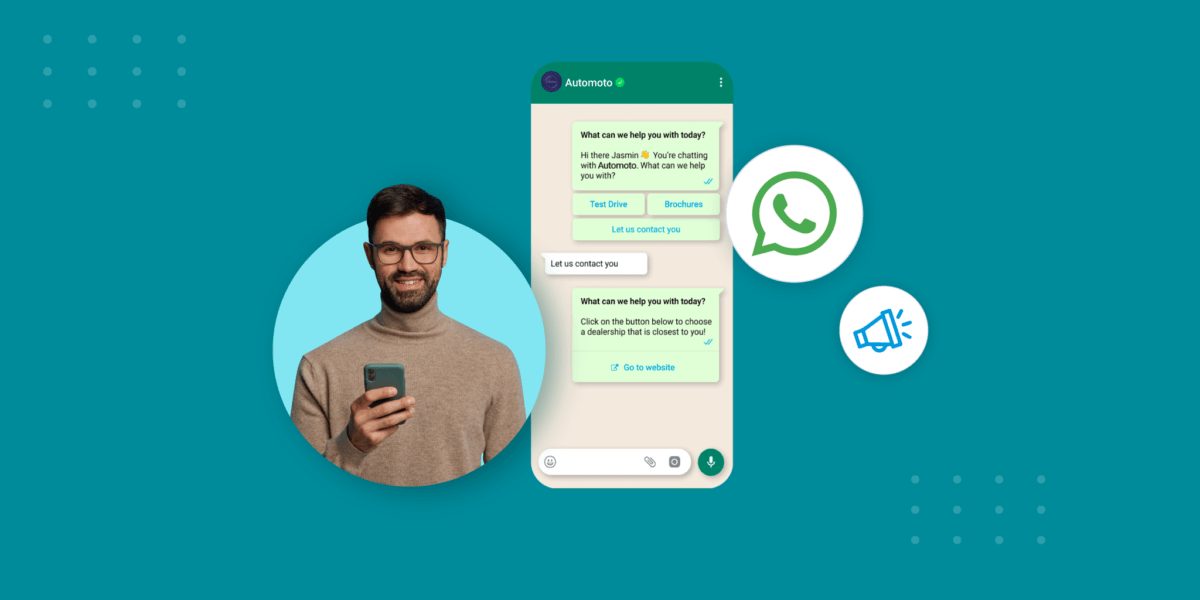
Benefits, Use Cases and Best Practices of Insurance Voice AI Solution for 2025
- March 5th, 2025 / 6 Mins read
-
 Aarti Nair
Aarti Nair
Insurance voicebot can help you connect better with your customers through their innovative features. Here’s what you need to know.
The insurance sector may have been a laggard in terms of digitisation, but it has managed to catch up with the times at a blazing rate with insurance voicebot and chat AI.
Technology is a lot more accessible than it was before. Digital literacy is at an all-time high. This has led to changing customer expectations – especially in insurance, an industry that works on set processes and user journeys.
Voice AI technology is powered by AI-powered that can simplify communication to a great extent. A smart insurance voicebot can talk to a customer (like an agent would), and guide them to the resolution – all while ensuring the customer stays engaged at all times.
In this article, we will cover the most important and practical use cases of voice AI solutions in insurance that will help you streamline your customer support.
How can insurance voice AI call achieve better customer communication?
Voicebots can be the ultimate tool for customer communication for insurance companies.
Insurance voicebots are hands-free, real-time, and precise with their responses, making many businesses turn to voice automation.
“Today, 80% of our queries are being end-to-end resolved by conversational AI, only 20% of them need to be routed to a human agent”, Head of Customer Experience at Bajaj Allianz General Insurance, Ankit Goenka speaks to Verloop.io on how AI is disrupting insurance.
Bajaj Allianz Life Insurance, on the other hand, is driving interactions through AI too, especially voice. “Significant numbers of calls are dealt with by a voicebot, which are trained to understand the context of customer calls, recognise the voice’s gender, to calibrate the responses according to the query”, Goutam Dutta, Chief Information & Digital Officer at Bajaj Allianz Life Insurance, tells TOI.
Read the full case study: Why Humanising the Digital is Crucial in Customer Support?
The sector possesses the unique advantage of leveraging cutting-edge technology such as conversational AI to establish meaningful connections.
Here are some reasons industry experts cite in favour of AI-powered voicebot in insurance:
- Voicebots offer immediate value delivery rather than droning through painfully arduous IVR menu options helping improve CX.
- Routine information collection is a major drain on resources, but conversational AI can automate and integrate with databases, CRMs, etc. to autofill forms.
- An insurance voicebot understands customer behaviour and intent to follow a data-driven approach to personalise policy recommendations, and eventually close more deals.
- By automating several user journeys with a voicebot, businesses can cut down manual workloads and reduce operational cost overheads.
- Conversational AI, with voicebot, will help insurance save up to a whopping $390 billion across the front, middle, and back offices by 2030!
Common insurance voicebot AI use cases
Voicebots in insurance can take your customer communication gear up. How, you ask? Here are the top use cases of voicebot in the insurance industry.
1. Answering FAQs on process-related queries
Voicebots in insurance can handhold your customers throughout their user journeys.
Filing insurance claims and making payments can be cumbersome for a lot of people. Especially for ones who need to become more familiar with these processes. An insurance voicebot can help policyholders navigate these processes in real-time with ease.
2. Informing about plans and policies
Insurance voicebot can be your prospect’s personal advisor as they connect with you to know about plans and policies. By asking specific questions about the user’s needs and requirements, they can suggest the best plans and policies for the user. This kind of interaction has a direct impact on the user’s buying experience with your brand.
3. Calculating insurance and EMI
Insurance and EMI calculators are based on certain algorithms that tell people how much monthly or annual premium they need to pay based on certain factors such as age, location, and vehicle type (for motor insurance), etc. A voicebot can also do that and give users a breakdown of the insurance amount they need and also answer their questions right then and there.
4. Verifying users for KYC
A powerful insurance voicebot can verify customer identities with strong voice biometrics and cognitive technologies. They can help you meet your security regulations by avoiding any unauthorised access to your user’s info.
Insurance voicebot can evaluate the speaker’s voice to see if there is a match in your database before proceeding to discuss private and confidential information. It can help speed up the KYC process by collecting information from the users and using AI to verify them.
5. Policy renewals
As policy expiration dates approach, voicebots can retrieve customer information from previous interactions and proactively notify them about renewals. They can guide customers through the renewal process in a conversational manner, answering questions about renewal options, coverage details, premium payments, and more. This makes the process straightforward, supportive, and efficient.
For example: “Hi Aarti, just a reminder that your health insurance plan is set to expire on August 19th, 2024. Would you like to review your renewal options for the upcoming year?”
Additional reading: How Voicebots are Changing the Way We Interact with Technology?
6. Up-selling and cross-selling
Voicebots in the insurance sector can significantly enhance upselling and cross-selling efforts by leveraging advanced customer data analysis. These intelligent bots can suggest tailored add-ons and additional products, such as super top-ups and extended coverage, that align with each customer’s unique needs. By offering personalised recommendations, voice bots not only improve the customer experience but also increase the likelihood of boosting sales, both immediately and in the future.
7. Claim processing
Voice bots are transforming the insurance sector by streamlining the claims process. They guide customers through each step, enabling them to submit required photos and documents directly to the appropriate portals or entities via voice commands. This automation simplifies the traditionally complex and stressful claims procedure, making it more efficient and user-friendly. Available 24/7, voice bots provide real-time assistance, answer FAQs, and offer updates on claim status, significantly enhancing customer satisfaction. By handling repetitive tasks, voice bots free up human agents to focus on more complex issues, thereby improving overall operational efficiency and ensuring faster claim resolutions.
8. Sending reminders and follow-ups
One of the best use cases of voicebot in the insurance industry is sending reminders and follow-ups. Let’s take examples of the kinds of communication you can automate with a voicebot.
Timely reminders like “Hi Alok, your car insurance with policy number 4637 is due for renewal on 1/2/22. If you’d like to make the payment now, say “yes” to get the payment link on your registered number”
Follow-ups like “Hi Salman, you had inquired about our “Life insurance Pro” plan recently. Would you like to know more about it?”
Updates like “Hi Meher, the premium for your health insurance “Stayfit Health” plan has been successfully paid and processed. Thank you for your patronage!”
Feedback checks like “Hello Tracey, your documents were successfully processed. We’d love to hear from you about your experience!”
In addition, follow-ups scheduling feature could be useful for insurance sales representatives, insuretech recruiters and other specialists within the industry.
9. Scheduling meetings
Customers can use voicebot to schedule appointments for their insurance. For example, if motor insurance has expired, the customer needs an agent to inspect the vehicle. Or in the case of health insurance, the customer needs to get a health checkup done. In such cases, the customer can use a voicebot at their convenience to schedule an appointment.
10. Locating nearby branches
Many times, a customer needs to visit a site, such as a garage, hospital or insurance company’s branch to avail their services. Voicebot can help these customers find the location closest to them.
The future of voice AI in insurance
Voicebot technology in insurance is paving the way for the future of the industry. Insurance companies can expect voice AI to be robust and powerful enough to underwrite and personalise policies according to the user’s needs.
Another top trend you can see with insurance voicebot is becoming more inclusive of regional-specific languages and dialects. You can train your voice AI in insurance to help process claims and answer queries for users living in typically inaccessible parts of the country.
With the potential areas of implementation paired with the long-term advantages, it would be interesting to see how everything pans out. As the world gradually moves toward voice technologies, it is absolutely clear that voicebot in insurance is set to deliver impressive ROI for companies that hop aboard this trend as soon as possible. From reaching out to new prospects through voice search to assisting policyholders in filing claims – voice AI in insurance is the future.
Looking for an insurance voicebot to add a human touch to your customer interactions?
Verloop.io is the leading voicebot technology provider for customer support teams. Our Voice AI is fortified with proprietary NLP, LLM and spoken language understanding (SLU), our offering support to people as, when, where, and however they need it.
Learn how you can use a voicebot to improve your customer support experience by talking to our experts!
FAQs of Insurance Voice AI Call Solution
1. What is an insurance voicebot, and how does it work?
An insurance voicebot is an AI-powered assistant that handles customer interactions through voice commands. It uses speech recognition and natural language processing (NLP) to understand queries, provide policy details, process claims, schedule renewals, and assist with customer support—reducing wait times and improving service efficiency.
2. How can a voicebot improve customer experience in the insurance industry?
Voicebots provide 24/7 support, handle high call volumes efficiently, and offer quick, accurate responses to customer inquiries. They streamline policy inquiries, claims processing, and premium payments, ensuring a frictionless, personalized experience for policyholders.
3. Can insurance voicebots handle complex queries like claims processing?
Yes! Advanced voicebots powered by Gen AI can handle complex claims-related queries, guide customers through the process, verify documents, and even escalate cases to human agents when necessary—ensuring a smooth claims journey without long wait times.
4. What are the key benefits of implementing a voicebot in an insurance business?
- Faster query resolution ⏳
- Reduced call center costs 💰
- Improved customer satisfaction 😊
- 24/7 availability 📞
- Automated claims processing 📄
- Personalized policy recommendations 🎯
5. How secure are voicebots for handling sensitive insurance data?
Top-tier voicebots use end-to-end encryption, multi-factor authentication, and compliance with industry regulations (e.g., GDPR, HIPAA) to protect customer data. AI-driven fraud detection also enhances security by identifying suspicious activities during interactions.






